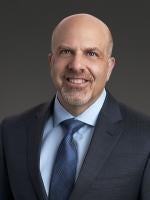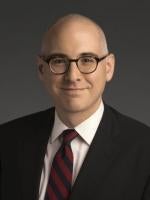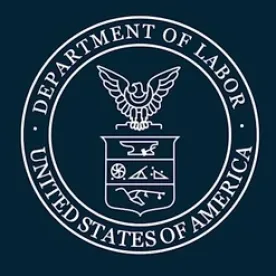The U.S. Department of Labor (“DOL”) issued revised regulations concerning the Families First Coronavirus Response Act (“FFCRA”) on September 11, 2020, just over a month after the U.S. District Court for the Southern District of New York invalidated four components of the previous iteration of the regulations. The move comes with only four months remaining before the FFCRA’s leave provisions expire on December 31, 2020. We previously summarized the District Court’s August 3, 2020 opinion in an earlier advisory. The revised regulations respond to the District Court’s ruling with a combination of revision, re-affirmation, and further explanation, and are set to be published in the Federal Register on September 16, 2020.
FFCRA Leave is Available Only if the Employee Has Work From Which to Take Leave
In the original rule, the DOL included as a prerequisite for leave under the FFCRA (through either the Emergency Paid Sick Leave Act (“EPSLA”) or the Emergency Family and Medical Leave Expansion Act (“EFMLEA”) that employees must actually have work available when the need for FFCRA leave arises. In response to the court’s ruling, the DOL reaffirmed its position that the plain language of the FFCRA provides a but-for causation standard, meaning the employee’s qualifying reason for FFCRA leave must be the only reason necessitating the leave. Accordingly, if the employee is unable to work due to a business closure, furlough, or other business interruption, the qualifying reason cannot be the sole cause of the leave. As the District Court’s invalidation of this part of the rule was that based on the determination that the work-availability provision only applied to some of the qualifying reasons for FFCRA leave, the DOL filled this gap, so the work-availability requirement applies to all qualifying reasons.
Placing the act in context with the pandemic, the DOL noted that one of the FFCRA’s purposes is to discourage employees who may be infected with COVID-19 from coming to work; if there is no work available, there is no need to provide an incentive to stay home. The DOL clarifies that although employers can, of course, still reduce or eliminate work, the work-availability requirement would not permit an employer to avoid FFCRA leave requirements by artificially claiming lack of work or by altering an employee’s schedule to make work unavailable.
Intermittent FFCRA Leave Requires Employer Approval
The DOL also reaffirmed its position that intermittent FFCRA leave is permitted only with employer consent. The District Court’s ruling struck down the employer approval requirement, holding that the DOL had not adequately justified its existence. The revised rule retains the employer approval requirement, augmented by further explanation.
Unlike the FMLA, the FFCRA does not expressly address intermittent leave, instead giving the DOL broad regulatory authority to fill in the blanks. Using FMLA intermittent leave as a comparative guidepost, the DOL noted that intermittent FMLA leave is available where an employee has a medical need for intermittent leave for themselves or a family member’s serious health condition, or where the employer has approved intermittent leave to care for a healthy newborn or adopted child. Where medical necessity is not implicated, the employer’s consent is required for the intermittent leave arrangement, which should in turn avoid “unduly disrupting the employer’s operations.”
In the context of a ubiquitous reason for intermittent FFCRA leave, specifically leave necessitated by the closure of a school, place of care, or childcare center, medical necessity is simply not applicable. Accordingly, the DOL justifies the employer consent requirement by comparison to the FMLA’s requirement of employer approval to care for a healthy newborn or adopted child. In this connection, the DOL reasoned that intermittent leave obligations should “balance the employee’s need for leave with the employer’s interest in avoiding disruptions by requiring agreement by the employer for the employee to take intermittent leave.”
Significantly, the DOL notes that employer approval is not required for FFCRA leave taken in full day increments. Thus, where a child’s school operates on an alternate day or hybrid model and is physically closed on certain days, each day of school closure constitutes a separate reason for FFCRA leave that ends when the school reopens. This applies where the school is open to certain students on particular days, provided the attendance determination is made by the school and not the employee. This interpretation also applies to schedules where the employee’s child attends in-person classes for half of each school day or attends in-person every other week. The employee will be permitted to take non-intermittent FFCRA leave to care for the child during the half-days or weeks when the child is not in school. The key distinction appears to be that the employee’s leave must be in lock-step with the school closure; if the employee decides to take leave for reasons other than the school’s in-person instruction schedule, the leave would be intermittent and employer approval would be required.
The Definition of “Health Care Provider”
The original rule contained an expansive definition of “health care provider,” focusing on the type of employer and not the actual roles of individual employees. The District Court held that the definition must require “at least a minimally role-specific determination” of individuals capable of providing healthcare services. Responding to this criticism, the DOL’s revised rule limits the health care provider exception to employees who: (1) meet the FMLA definition of health care provider; or (2) who are “employed to provide diagnostic services, preventive services, treatment services or other services that are integrated with and necessary to the provision of patient care and, if not provided, would adversely impact patient care.”
The FMLA definition is not a source of controversy. Under FMLA regulations, doctors of medicine, osteopathy, podiatry, dentistry, clinical psychology, and optometry are included, as well as chiropractors, nurse practitioners, midwives, clinical social workers, and physician’s assistants. As to other categories of employees, the DOL highlighted that a broad definition is necessary because a wide range of employees’ services are necessary to combat COVID-19 in the health care context and are “essential to the continuity of operations of our health care system in general” such that their absence from the workplace would be “particularly disruptive.”
Drawing from the Pandemic and All-Hazards Preparedness and Advancing Innovation Act of 2019 (Pandemic Act) for guidance, the DOL identified categories of service that would constitute health care services.
-
Diagnostic services include taking or processing samples, performing or assisting in the performance of x-rays or other diagnostic tests or procedures, and interpreting test or procedure results;
-
Preventative services include screenings, check-ups, and counseling to prevent illnesses, disease, or other health problem;
-
Treatment services include performing surgery or other invasive or physical interventions, prescribing medication, providing or administering prescribed medication, physical therapy, and providing or assisting in breathing treatments;
-
Integrated services are “integrated with and necessary to diagnostic, preventive, or treatment services and, if not provided, would adversely impact patient care, including bathing, dressing, hand feeding, taking vital signs, setting up medical equipment for procedures, and transporting patients and samples.” These services must be integrated and necessary to the provision of care, a position the DOL contends “significantly limits this category.”
Types of employees covered by these categories include “nurses, nurse assistants, medical technicians and others directly providing diagnostic, preventive, treatment or other integrated services”; employees providing services “under the supervision, order, or direction of, or providing direct assistance to” a health care provider; and employees who are “otherwise integrated into and necessary to the provision of health care services.”
Notably, the DOL identified specific categories of employees in an illustrative, but not exhaustive, list whose positions are “too attenuated to be integrated and necessary components of patient care”, including information technology (IT) professionals, building maintenance staff, human resources personnel, cooks, food service workers, records managers, consultants, and billers.
The DOL also provides an illustrative list of “typical work locations,” including “a doctor’s office, hospital, health care center, clinic, medical school, local health department or agency, nursing facility, retirement facility, nursing home, home health care provider, any facility that performs laboratory or medical testing, pharmacy, or any similar permanent or temporary institution, facility, location, or site where medical services are provided.” The regulation does note that an employee need not work at one of these facilities to be considered a health care provider, and that working at one of these facilities does not automatically make an employee a health care provider.
Employee Notice and Information Requirements
The original rule required employees to provide documentation of their need to take FFCRA leave before commencing leave. The District Court ruling invalidated that component, finding it entirely inconsistent with portions of the statute permitting notice “as is practicable.”
In response, the DOL adjusted the regulation to require that documentation required under the FFCRA be provided “as soon as practicable, which in most cases will be when the employee provides notice” of the need for leave. Where an employee seeks EFMLEA leave and that leave is foreseeable, notice is still required as soon as practicable, but due to the foreseeability it will generally be provided before taking leave.
FAQ Updates
The DOL also updated its FAQ’s to bring them into alignment with the new rule, including changing documentation timing requirements, updating the definition of “health care provider”, and discussing the use of intermittent leave.
The FAQ was also updated to note that “[t]he revised explanations and regulatory text become effective immediately upon publication in the Federal Register on September 16, 2020. This means they are effective from September 16, 2020 through the expiration of the FFCRA’s paid leave provisions on December 31, 2020.”






 />i
/>i

